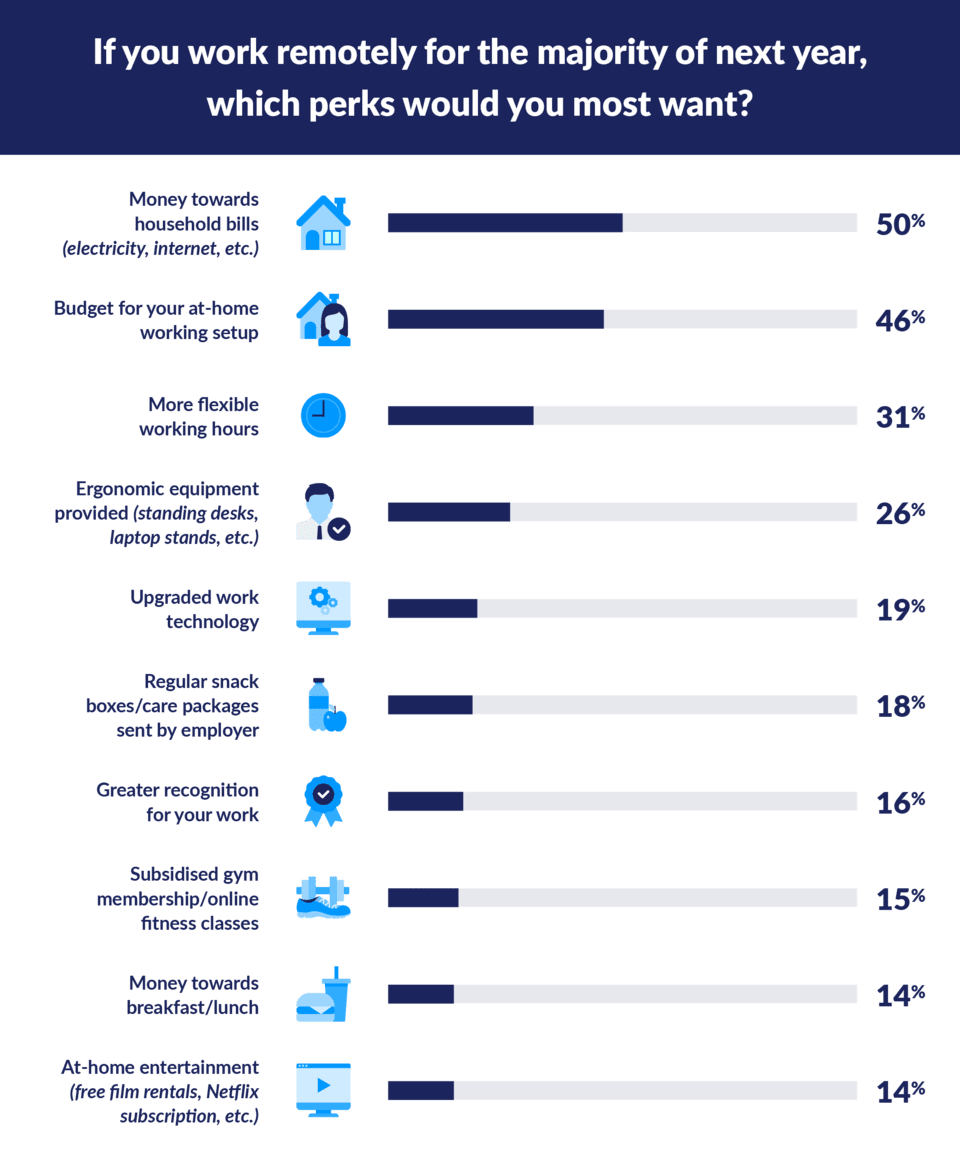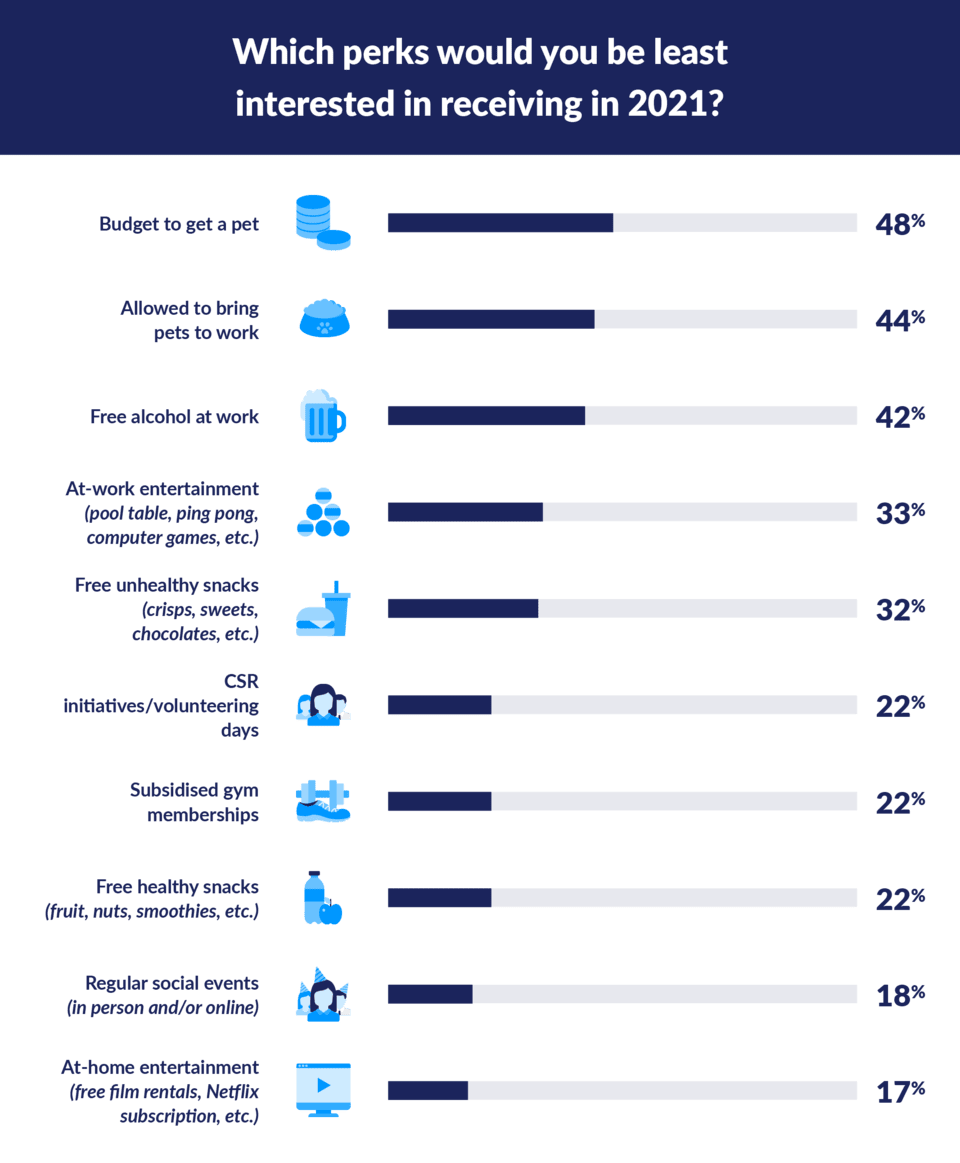Which employee perks are your teams least interested in receiving in 2021?
![perks employees are least interested in]()
In 2021, employees are least interested in receiving a budget to get a pet (48%), being allowed to bring pets to work (44%) and getting free alcohol at work (42%).
On top of that, 33% of employees not interested in at-work entertainment (pool table, ping pong, computer games, etc.) and 33% don't want free unhealthy snacks. This suggests that the Silicon Valley-style offices will no longer be a draw for employees.
Now that so many see working from home more often as the norm in the New Working World, these incentives could quickly find themselves becoming ‘perks of the past’. After all, if we’re not going to the office as often, we’re not going to use those perks as often and employers will be able to save money on them.
This correlates with the findings on what employees would like their employers to do with the savings made on office costs, as 39% said they’d want their employer to invest in perks which can be used at home. Where lavish offices were once used to attract top talent, we may see a shift in 2021 to the most lavish at-home working perks being a key recruitment driver.
Despite being the second perk which employees are least interested in, younger generations are more likely to want pets in the workplace than their older colleagues. Only 28% of 18–24 year-olds said they’re not interested in being allowed to bring pets to work. Just over half (51%) of those aged 55+ and half (50%) of 35–44 year-olds said they weren’t interested in bringing pets to work.
Wanting CSR initiatives/volunteering days also divides the age groups. 39% of 18–24 year-olds aren’t interested in CSR or volunteering at work. This is compared to 19% of those 35–44, 16% who are 45–54, and 15% 55+.
Looking at the data at face value could suggest that the younger generations care less about CSR and volunteering. On the other hand, with Gen Z demanding more authentic ethical stances from brands, it’s possible that they’re not buying into the CSR stance of their employer.










Share